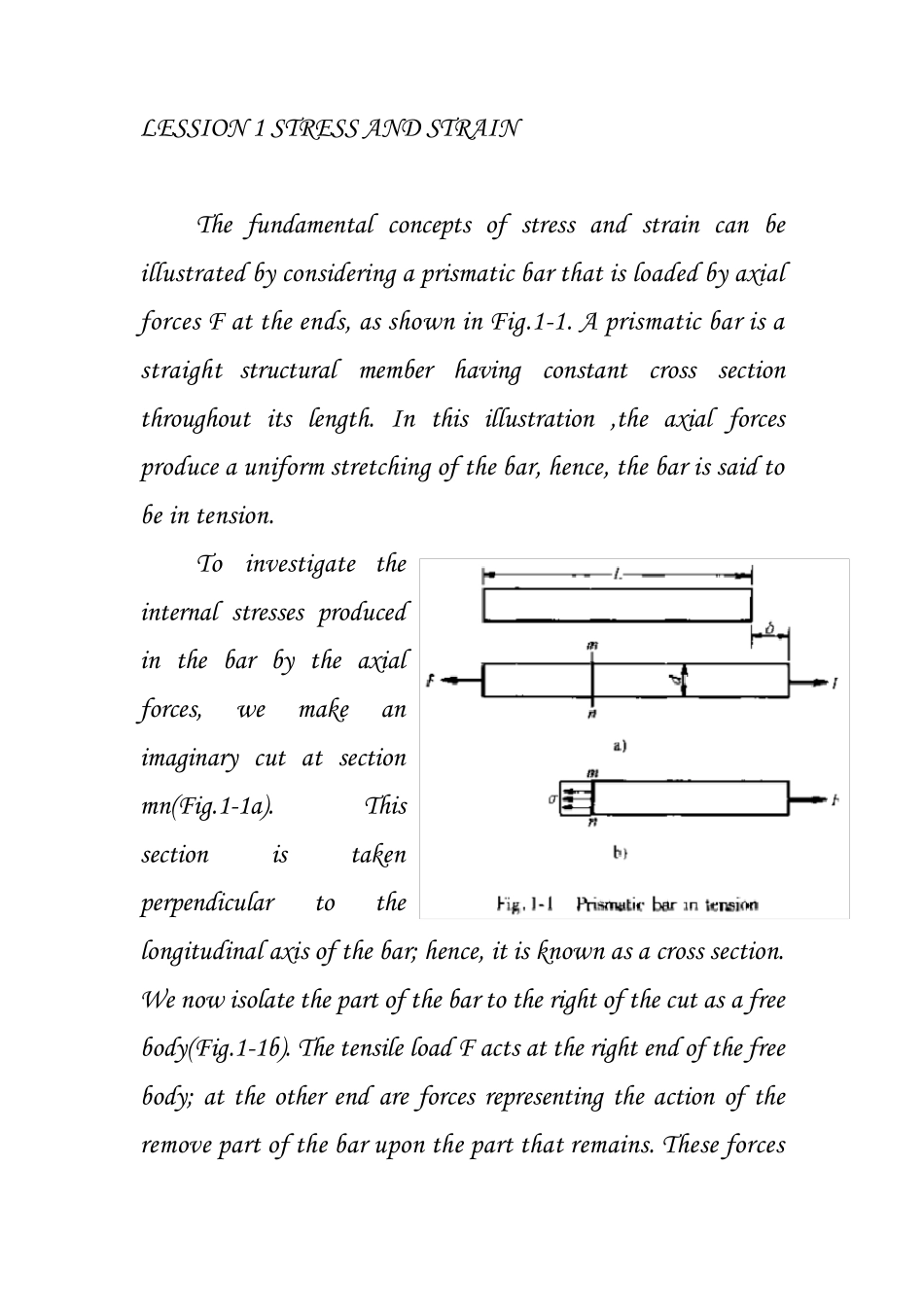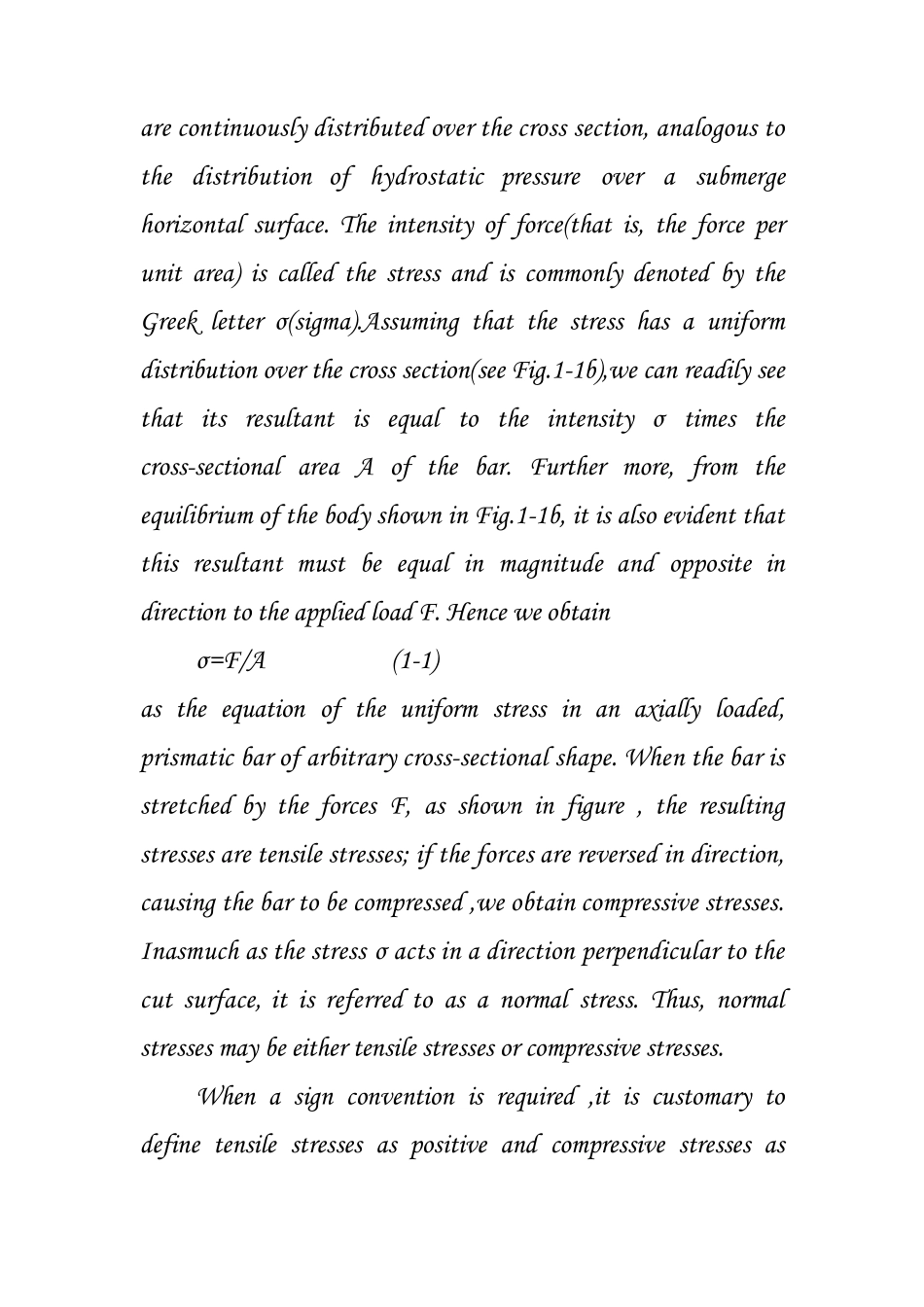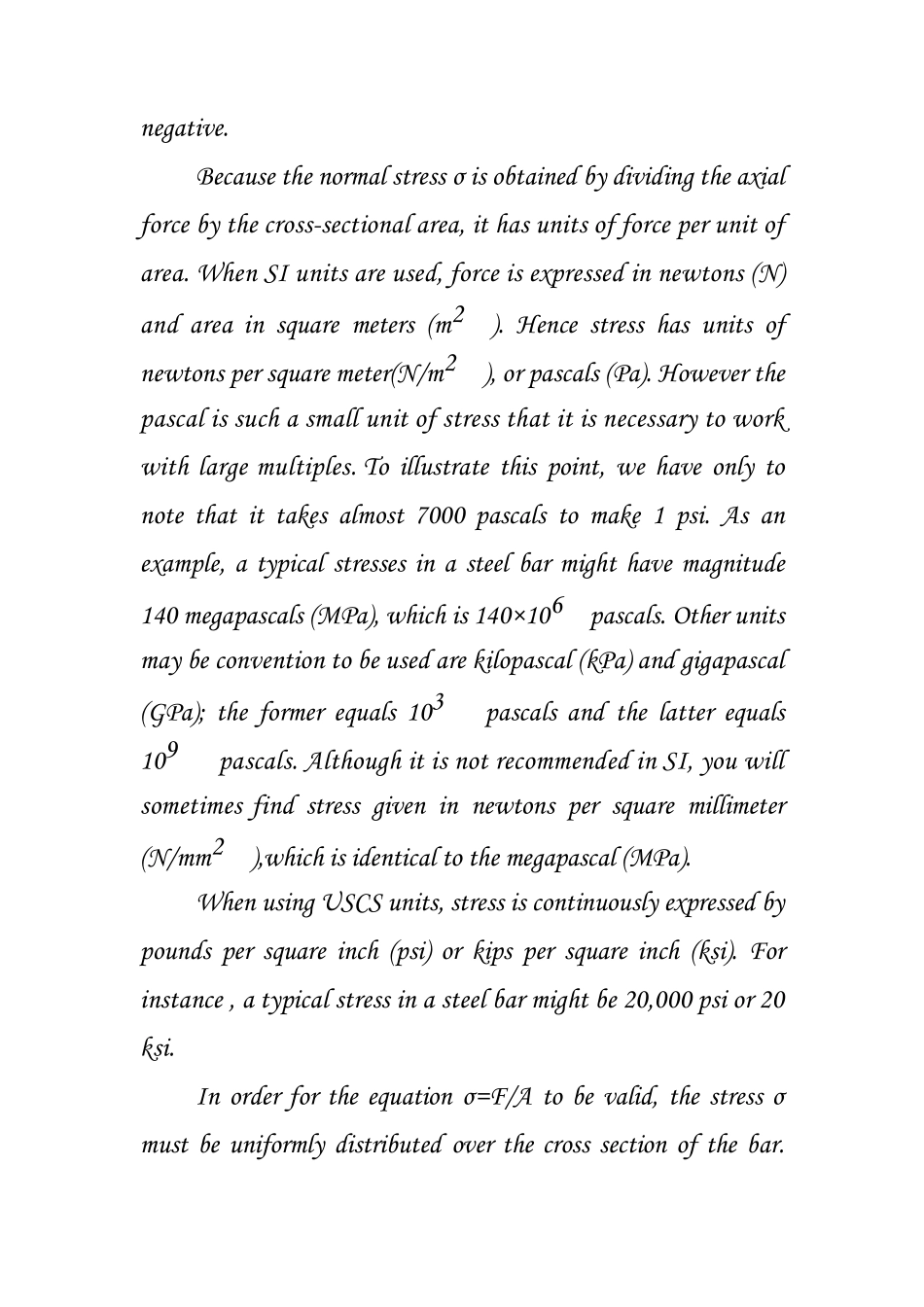LESSION 1 STRESS AND STRAIN The fundamental concepts of stress and strain can be illustrated by considering a prismatic bar that is loaded by axial forces F at the ends, as shown in Fig.1-1. A prismatic bar is a straight structural member having constant cross section throughout its length. In this illustration ,the axial forces produce a uniform stretching of the bar, hence, the bar is said to be in tension. To investigate the internal stresses produced in the bar by the axial forces, we make an imaginary cut at section mn(Fig.1-1a). This section is taken perpendicular to the longitudinal axis of the bar; hence, it is known as a cross section. We now isolate the part of the bar to the right of the cut as a free body(Fig.1-1b). The tensile load F acts at the right end of the free body; at the other end are forces representing the action of the remove part of the bar upon the part that remains. These forces are continuously distributed over the cross section, analogous to the distribution of hydrostatic pressure over a submerge horizontal surface. The intensity of force(that is, the force per unit area) is called the stress and is commonly denoted by the Greek letter σ(sigma).Assuming that the stress has a uniform distribution over the cross section(see Fig.1-1b),we can readily see that its resultant is equal to the intensity σ times the cross-sectional area A of the bar. Further more, from the equilibrium of the body shown in Fig.1-1b, it is also evident that this resultant must be equal in magnitude and opposite in direction to the applied load F. Hence we obtain σ=F/A (1-1) as the equation of the uniform stress in an axially loaded, prismatic bar of arbitrary cross-sectio...


